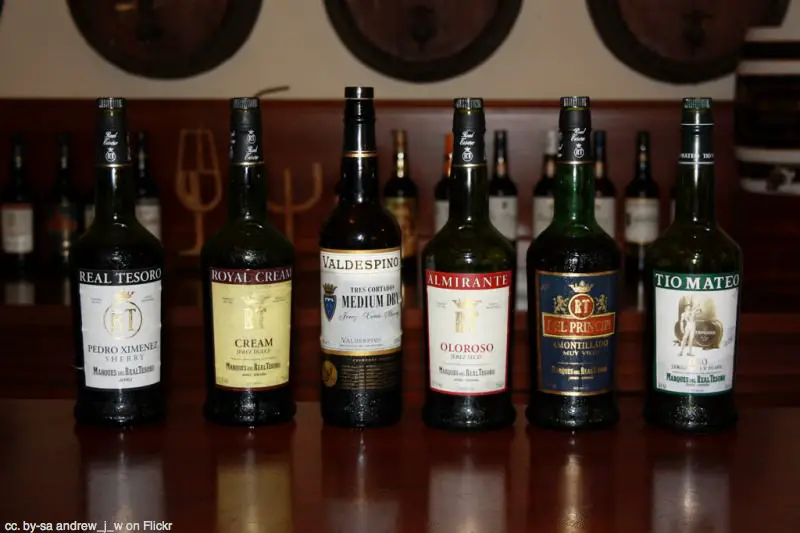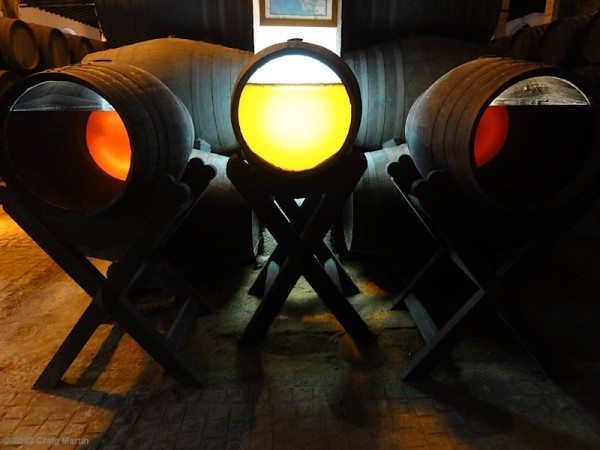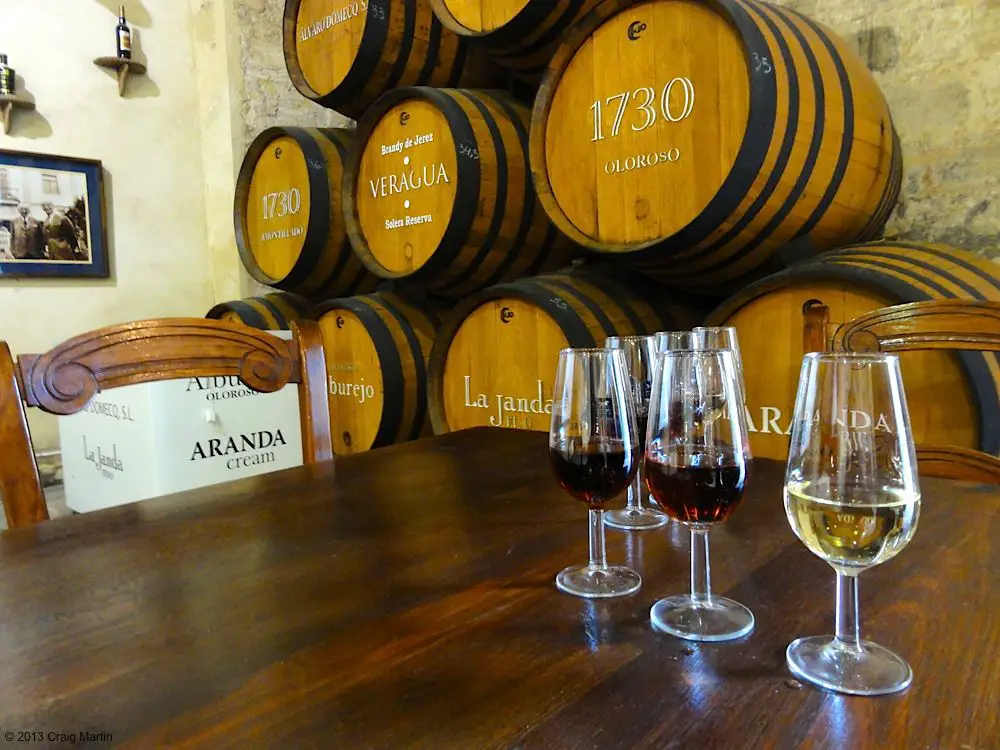Every Type of Sherry Wine Explained
Who would have thought there were so many types of sherry? I’d always associated the word with the overly-sweet tipple favoured by grandmothers and Agatha Christie characters, but it turns out sherry is amazingly varied.
Sure, the syrupy variety has a place (and some of these are extremely delicious, to tell you the truth), but at the other end of the scale are sherries that seem to have nothing in common with their cloying cousins.
I was surprised to learn that all sherries are made from white grapes — even the darkest ones, which I’d always thought were made with red grapes. Goes to show how little I know, right? The colour changes as a result of the ageing process.

In Jerez, where sherry comes from, the most common sherries are Finos, Amontillados, Olorosos, and Pedro Ximenez, but there are also a few interesting extras.
1. Fino
Fino looks like a white wine in the glass, but it’s unlike any white wine you’ve ever tried — it’s incredibly dry and sharp.
When Fino is ageing in the barrel, a layer of yeast called “flor” grows on top of the liquid and prevents the wine having contact with the air. This means that there’s no oxidation and the wine doesn’t change colour.
2. Manzanilla
Made using a similar process to Fino, Manzanilla isn’t really sherry as it’s not made in Jerez. It’s still produced in the sherry Triangle, though, in Sanlúcar de Barrameda. It’s lighter and more floral than Fino, but is still very dry and sharp.
Read more about Jerez, Spain:
- Sherry Tours – The Best Wineries of Jerez (Visited and Reviewed)
- Christmas in Jerez, Spain
- How to make sherry
- Spain travel
Tours of Jerez de la Frontera
3. Amontillado
Amontillado starts life in the same way as Fino, with yeast growing on the liquid inside the barrel. But halfway through the process, the winemakers add alcohol (a grappa-like grape spirit) to the barrel, which raises the alcohol content of the wine and kills off the yeast. The wine is then left in the barrel, and since it now has contact with the air, it starts to oxidise. The result is an attractive amber-coloured wine that’s a lot smoother than Fino but is still very dry.

4. Oloroso
Yeast doesn’t have a chance when Olorosos are being made, as the winemakers add the grape spirit right at the beginning of the process — the alcohol level is too high for “flor” to grow. This means that the liquid has contact with the air from the start, resulting in a darker, more well-rounded flavour than the others. It’s still not sweet, though.
5. Palo Cortado
Winemakers use a simple symbol system to indicate the quality of the wine in each barrel — a single stroke (/), known as a “palo” means it’s top quality. The name “Palo Cortado” means a cut stroke, or a stroke with a line through it — in other words, something’s gone wrong. Palo Cortado starts life as Fino, but some barrels just don’t progress correctly. So the winemakers take them out of action and leave them to one side (so to speak), and just… wait and see. Sometimes, what results is Palo Cortado, which smells like an Amontillado but tastes like an Oloroso.
6. Cream

Ah, we made it. Cream is what most English people think of when they think of sherry, the most well-known being Harvey’s Bristol Cream (which is made in Jerez, not Bristol). It’s made by mixing Oloroso wine with Pedro Ximenez and is dark, dense and syrupy in appearance. It’s definitely sweet.
7. Pedro Ximenez
Sweeter still, though, is Pedro Ximenez. While most sherry is made from Palomino grapes, Pedro Ximenez is produced from grapes of the same name and the grapes are left in the sun to dry for a day before being pressed. The result is a very dark, thick wine with a strong raisiny flavour.
8. Moscatel
Moscatel is similar to Pedro Ximenez, but is made with Moscatel grapes. It isn’t quite as sweet, though, and certainly isn’t as common.
9. Other types
You’ll see a few other types of sherry around, generally sweetened versions of the dry sherries. For example, pale cream is a mix of Fino and Amontillado that’s been sweetened but retains a very pale colour, and medium sherry is a sweetened version of Amontillado or light Oloroso.
Read more about Jerez, Spain:
- Sherry Tours – The Best Wineries of Jerez (Visited and Reviewed)
- Christmas in Jerez, Spain
- How to make sherry
- Spain travel







